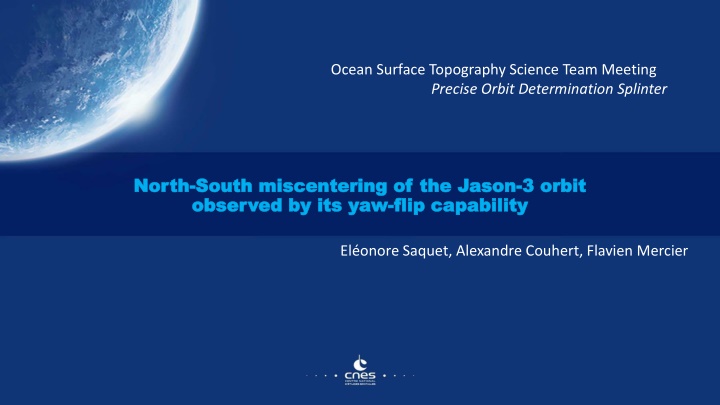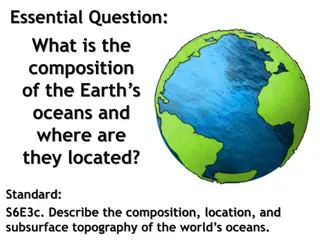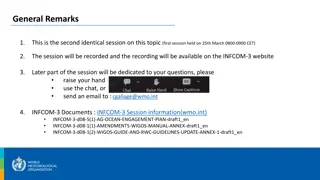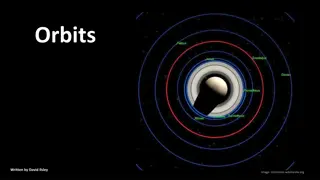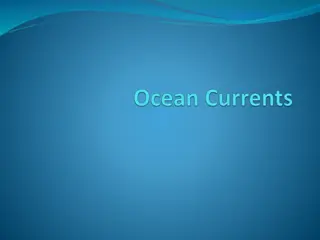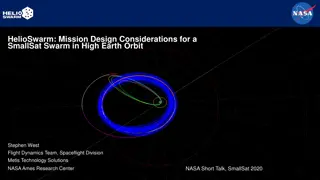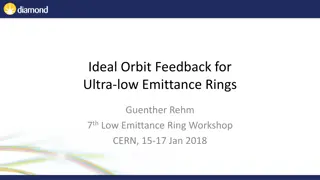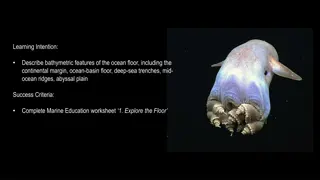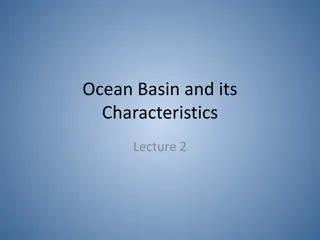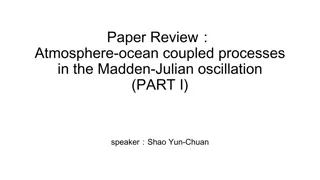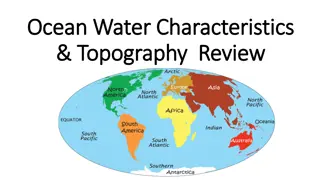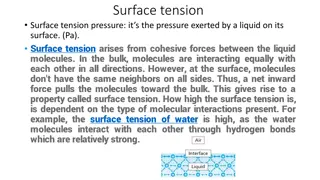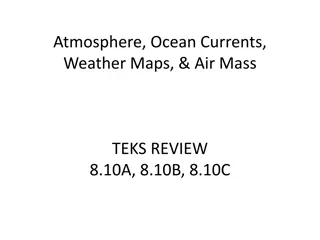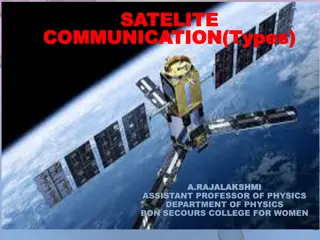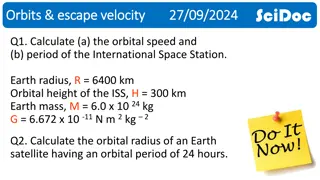Ocean Surface Topography Science Team Meeting on Precise Orbit Determination
The Ocean Surface Topography Science Team Meeting delved into the precise orbit determination of the Jason-3 satellite, focusing on miscentering observations and the benefits of yaw flips. The meeting discussed previous approaches, the context of the satellite's orientation, goals for monitoring perturbations, and the impact of normal acceleration offsets before and after flip events. The team analyzed empirical parameters and factors influencing orbit miscentering for improved accuracy.
Download Presentation

Please find below an Image/Link to download the presentation.
The content on the website is provided AS IS for your information and personal use only. It may not be sold, licensed, or shared on other websites without obtaining consent from the author.If you encounter any issues during the download, it is possible that the publisher has removed the file from their server.
You are allowed to download the files provided on this website for personal or commercial use, subject to the condition that they are used lawfully. All files are the property of their respective owners.
The content on the website is provided AS IS for your information and personal use only. It may not be sold, licensed, or shared on other websites without obtaining consent from the author.
E N D
Presentation Transcript
Ocean Surface Topography Science Team Meeting Precise Orbit Determination Splinter North North- -South South miscentering miscentering of the Jason observed observed by by its its yaw of the Jason- -3 yaw- -flip flip capability capability 3 orbit orbit El onore Saquet, Alexandre Couhert, Flavien Mercier
OSTST 2020 Introduction Context Previous approaches Normal offset (GPS int ambiguity) Flips approach (GPS int ambiguity) Normal offset (other measurements) Flips approach (other measurements) Conclusion 2
OSTST 2020 Context Satellite: Jason-3 Nominal orientation: nadir Earth-pointed Attitude law: Yaw steering when >15 and <-15 Fixed yaw when -15 < <15 A yaw flip is performed at =0 Yaw flip benefits: Disentangle time tagging from along-track center of phase POD instrument offsets Observe separately the combined effects of cross- track miscalibrated SRP models/thermal effects or POD instrument locations, and the Z-component of geocenter motion whose amplitude is thoroughly debated 3
OSTST 2020 Context Goal: Monitoring of the residual normal perturbations Observation of the geocenter motion estimates in the Z (North-South) direction Comparison with previous methods Approach: Focus on orbit arcs where flip events occur Definition of the 8-day orbit arcs: 4 days before and after the flip events Estimated empirical parameters: o constant cross-track accelerations with 4-day intervals o periodic once-per-revolution accelerations in the along/cross-track directions with 1-day intervals o constant along-track accelerations with 2 orbital period intervals 4
OSTST 2020 Context Normal acceleration offset before and after the flip caused by: Cross-track error in the POD center of phase location Residual SRP modeling error of the satellite normal surfaces Unmodeled satellite thermal effects Common normal acceleration bias Common normal acceleration bias on both sides of the flip caused by: Geocenter motion in the Z direction (mainly) Residual solar-reflected/Earth-emitted radiation modeling errors? Normal acceleration offset The miscentering of the orbit around the Earth s CM in the Z direction can be recovered using the equation: Tz = ?????(?) ??0?3 where ??0is the common cross-track acceleration bias 5
OSTST 2020 Previous approaches Approach 365-day Amplitude Phase GPS+J3 (flt. amb., Couhert et al., 2020) 7.7 mm 361 d Tz GPS+J3 (int. amb., Couhert et al., 2020) 5.0 mm 24 d DORIS+J3 (Couhert et al., 2018) Tz 4.4 mm 23 d 6
Normal offset (GPS int. ambiguity) OSTST 2020 GPS measurements: integer ambiguity Offsets of the estimated normal accelerations before/after the flip (the common bias has been removed), which can be attributed to a wrong cross-track center of phase/mass location. The correction to be applied is given by: 2??0 ??0 ?02= 1.15 ?? Nota: the two groups of colors (blue/orange) denote the forward and backward flying attitude regimes 7
Normal offset (GPS int. ambiguity) OSTST 2020 Tz Decrease in the 118-day signal of the previous approaches, when applying the normal offset correction (via the GPS antenna phase center) Approach 365-day Amplitude Phase GPS+Jason-3 (int. amb., Couhert et al., 2020) 5.0 mm 24 d GPS+Jason-3 corr (int. amb., Couhert et al., 2020) 5.0 mm 24 d
OSTST 2020 Flips approach (GPS int. ambiguity) Common normal acceleration biases estimated on both sides of the flips reflecting the North-South miscentering of the Jason-3 orbit Approach 365-day Amplitude Phase Tz GPS+Jason-3 (int. amb., Couhert et al., 2020) 5.0 mm 24 d Flips (GPS int. amb.) 2.9 mm 48 d Tz 9
Normal offset (other measurements) OSTST 2020 DORIS measurements GPS measurements: float ambiguity The observability of these measurements in the cross- track direction is not strong enough
OSTST 2020 Flips approach (other measurements) Approach 365-day Amplitude Phase Tz Flips (DORIS) 9.3 mm 52 d Flips (GPS flt. amb.) 5.5 mm 331 d Tz 11
OSTST 2020 Conclusion The flips approach allows us to observe specifically the geocenter motion along the Z (North-South) axis. The 60-day sampling and/or residual errors in the modelling of solar-reflected/Earth-emitted radiations could explain the differences in the annual TZ geocenter estimates between the flips and previous approaches. Yaw flips are specific to the T/P and Jason missions. A recommendation of the OSTST POD group is to maintain the yaw flips for the Sentinel-6/Jason-CS mission. 12
